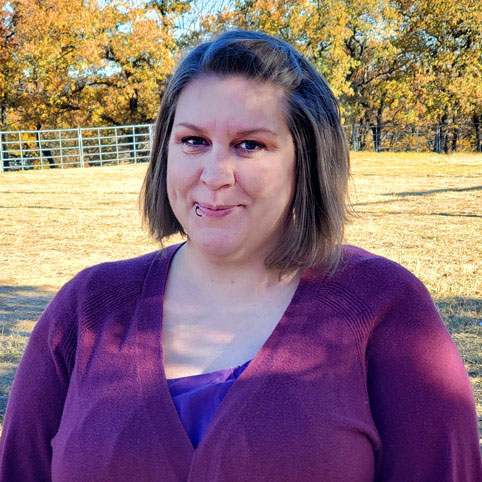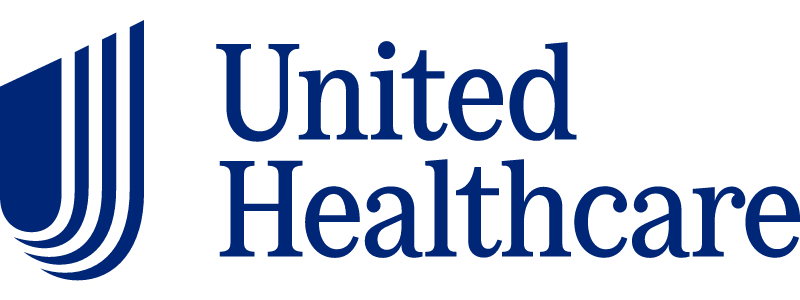Table of Contents
Family therapy, a form of psychotherapy, seeks to improve communication and resolve conflicts within a family unit. There are a variety of different approaches used. At Clearfork Academy, for example, we use Systemic Therapy and Narrative Therapy combined with attachment work.
The duration and phases of family therapy can vary significantly depending on the specific approach used and the unique dynamics of the family involved.
In this article, I explore various timelines for family therapy, illustrating how different models might progress through various stages so you can better understand what to expect in the process. In general, family therapy follows the sequence below, with examples from different approaches. However, each approach has unique phases.
Initial Phase: Assessment and Establishment of Therapeutic Alliance
Duration: 1-3 sessions
In the initial sessions, therapists:
- Assess family dynamics
- Identify the presenting problems
- Establish a therapeutic alliance with all family members
- Information gathering and goal setting.
The therapist observes interactions, gathers family history, and understands individual perspectives.
Examples:
- In Narrative Family Therapy, these sessions focus on understanding the family’s stories and identifying dominant narratives and values—what we tell ourselves and why
- In Structural Family Therapy, the therapist observes and evaluates the family’s structure and sub-systems
Middle Phase: Intervention and Change
Duration: Varies widely (5-20 sessions or more)
This phase is the core of the therapy, where specific interventions are applied to address the identified issues. The therapist works with the family to:
- Develop new communication patterns
- Resolve conflicts
- Working towards goals and tool building
- Alter dysfunctional behaviors
Examples:
- In Systemic Family Therapy, the focus is on changing the family’s interaction patterns
- In Cognitive Behavioral Family Therapy, the emphasis is on identifying and altering negative thought patterns and behaviors within the family context
- In Structural Family Therapy the family might work on altering hierarchies and boundaries within the family system to improve its functioning
- In Bowenian Family Therapy, the therapist might focus on reducing anxiety and increasing individual differentiation within the family system
Later Phase: Consolidation and Termination
Duration: 1-3 sessions
The focus shifts to consolidating gains, ensuring that positive changes are maintained, and preparing the family for the end of therapy, including applying tools. Therapists help the family plan for:
- The transition home
- The future
- Anticipating potential relapse into old patterns
- Developing strategies for independent problem-solving
Examples:
This might involve:
- Reinforcing narrative changes (Narrative Therapy)
- Role-playing future scenarios (Behavioral Family Therapy)
- Reinforcing new family structures and boundaries (Structural Family Therapy)
Continuous Evaluation
Throughout all phases, ongoing assessment is crucial. Therapists continuously evaluate progress and, if necessary, adjust the therapeutic approach based on the family’s evolving needs and dynamics.
In Summary
While the structure and focus of these phases can vary across different types of family therapy, the overarching goals remains the same:
- To facilitate positive change
- Enhance communication
- Promote understanding within the family unit
The flexibility of the timeline is essential, allowing therapy to be tailored to the unique needs and progress of each family.
Family Therapy Step by Step
There are many models of family therapy, each with its own timeline. To provide a clearer understanding of how the Clearfork Academy approach works, below are the steps for the ones we use: Emotionally focused, Attachment-Based, Narrative, and Systemic.
Each of these models offers a distinct perspective and methodology in addressing family dynamics and promoting healing within the family system, tailored to the specific needs and contexts of the families they serve. Clearfork Academy strives to find the most appropriate therapeutic fit for each family.
Emotionally-Focused Family Therapy (EFFT)
Both EFFT and ABFT emphasize the importance of emotions and attachments in family relationships, but they approach the therapeutic process through slightly different lenses and techniques.
Step 1: Assessment and Alliance Formation
- The initial phase involves understanding the family’s issues, establishing trust, and forming therapeutic alliances with each family member.
Step 2: Identifying the Cycle
- Therapists help the family identify the patterns or cycles of interaction that lead to distress, focusing on the underlying emotions and needs.
Step 3: Accessing Unacknowledged Emotions
- Family members are encouraged to explore and express emotions that they may not have previously acknowledged or understood.
Step 4: Reframing the Problem
- The therapist helps the family reframe their issues in terms of the emotional needs and attachment fears that drive their interactions.
Step 5: Promoting New Interactions
- Through guidance and experiential exercises, family members learn to interact in new ways that are more attuned to each other’s emotional needs.
Step 6: Consolidation and Integration
- The final steps involve reinforcing the new patterns of interaction, ensuring that changes are stable, and discussing how to apply these new interactions outside of therapy.
Attachment-Based Family Therapy (ABFT)
Step 1: Relational Reframe
- Establishing the focus of therapy on relationship repair
- It involves helping family members understand the importance of their relationships and the attachment perspective.
Step 2: Building an Alliance with the Adolescent
- The therapist works to build an alliance with the adolescent, validating their feelings and experiences to foster trust.
Step 3: Building Alliance with the Parents
- Similarly, an alliance is built with the parents, focusing on their concerns and experiences, and educating them on the importance of the attachment perspective.
Step 4: Repairing Family Interactions
- This involves facilitating conversations that address past hurts and misunderstandings, allowing for emotional healing and the establishment of trust.
Step 5: Promoting Autonomy
- In this final phase, the focus is on consolidating gains made during therapy, promoting autonomy within the family, and ensuring that family members can interact in healthy, supportive ways outside of therapy.
Narrative Family Therapy
Step 1: Externalizing the Problem
- Problems are externalized, meaning they are separated from the individual or family, allowing them to unite against the issue, not a person
- This step helps reduce blame and opens up space for change
Step 2: Mapping the Influence
- The therapist explores the problem’s impact on each family member, understanding how it influences their interactions and perceptions
Step 3: Deconstructing and Searching for Unique Outcomes
- Families are guided to deconstruct the problem-saturated stories and identify instances where they were able to resist the problem’s influence, known as unique outcomes
Step 4: Re-authoring the Narrative
- The family collaborates with the therapist to create new, empowering narratives that highlight their strengths, values, and competencies
- Integrates elements of attachment theory looking at family values, communication, and creating felt safety and understanding
Step 5: Documenting and Celebrating Changes
- Changes are acknowledged and solidified through therapeutic letters, certificates, or rituals, reinforcing the new narrative and celebrating progress
Systemic Family Therapy
Step 1: Joining and Engagement
- The therapist joins the family system, establishing rapport with each member and understanding the family dynamics as a whole
- Engagement involves recognizing and respecting the family’s values, beliefs, and structures
Step 2: Assessment and Hypothesizing
- The therapist assesses the family’s interaction patterns, communication styles, and systemic issues
- The therapist forms hypotheses about the relationships within the family and how these dynamics contribute to the problem.
Step 3: Systemic Intervention
- Interventions are designed to alter the family’s interaction patterns, challenge unhelpful beliefs, and encourage more adaptive behaviors
- Techniques may include reframing, restructuring, or introducing paradoxical directives to shift family dynamics
- Uses the analogy of planets in relation to another and if one changes alignment the others have to adjust
Step 4: Evaluating Change
- The therapist and family evaluate the effectiveness of interventions, assessing changes in family dynamics and individual well-being
- Adjustments to the therapeutic approach are made based on this ongoing evaluation
Step 5: Termination
- The family and therapist collaboratively decide when the goals have been sufficiently met to conclude therapy
- The focus is on ensuring the family can maintain and continue the positive changes independently
12 Things You Should Expect From Family Therapy
When embarking on family therapy, there are several key expectations that you should have regarding the process, regardless of the specific therapeutic model being used. These expectations set a framework for what family therapy involves, helping individuals and families prepare for the journey ahead in working toward healthier and more fulfilling family relationships.
Here are 12 things you can expect:
Initial Assessment
Expect an initial assessment phase where the therapist learns about your family’s dynamics, challenges, and strengths. This may involve individual and group interviews or questionnaires.
Involvement of Family Members
Family therapy typically requires the participation of various family members. Not everyone needs to be present in every session, but the involvement of key members is crucial for effective therapy.
Open Communication
The therapy setting is designed to encourage open and honest communication among family members, often guided and facilitated by the therapist.
Uncovering Underlying Issues
Family therapy aims to uncover deeper issues that may be affecting the family dynamics, not just the surface-level problems.
Changing Dynamics
Be prepared for the therapy to bring about changes in family dynamics and relationships, which may be challenging but are aimed at promoting healthier interactions.
Learning New Skills
Families can expect to learn new skills for communicating, problem-solving, and managing conflicts.
Active Participation
Active engagement from all participants is encouraged. Therapy is a collaborative process, and the outcomes are often reflective of the effort put in by the participants.
Emotional Moments
Therapy sessions can be emotionally intense as sensitive topics and buried feelings surface. It’s a space where members can express emotions they might not feel comfortable sharing elsewhere.
Confidentiality
What is discussed in family therapy sessions is confidential, with few exceptions. This confidentiality is crucial for creating a safe space for honest discussions.
Setting Goals
The therapist will help the family set realistic goals for therapy. These goals provide direction and a way to measure progress.
Homework Assignments
Therapists often give “homework” or tasks for family members to work on between sessions, which are designed to reinforce the learning and changes from therapy.
Progress at Your Own Pace
Progress in family therapy is not linear and varies from one family to another. It’s important to have realistic expectations and understand that improvement takes time and effort
Clearfork Academy Can Help Your Family
We have experienced, compassionate licensed family therapists on our Family Program Services team. If you have questions or feel that family therapy would be helpful for you and your family, reach out to us to discuss further or book an appointment.

Christine Zambos LMFT
Director of Family Services
Christine received a Bachelor of Fine Arts in Photography with a minor in Philosophy from Texas Woman’s University, a Master of Fine Arts in Photography from Louisiana Tech University, and a Master of Science in Marriage and Family Therapy from Texas Wesleyan University. Christine approaches clinical work from a systems and narrative perspective. Looking at how each person’s values and world view affect and interact with others. When not at work Christine enjoys viewing and making art, knitting, gardening.





